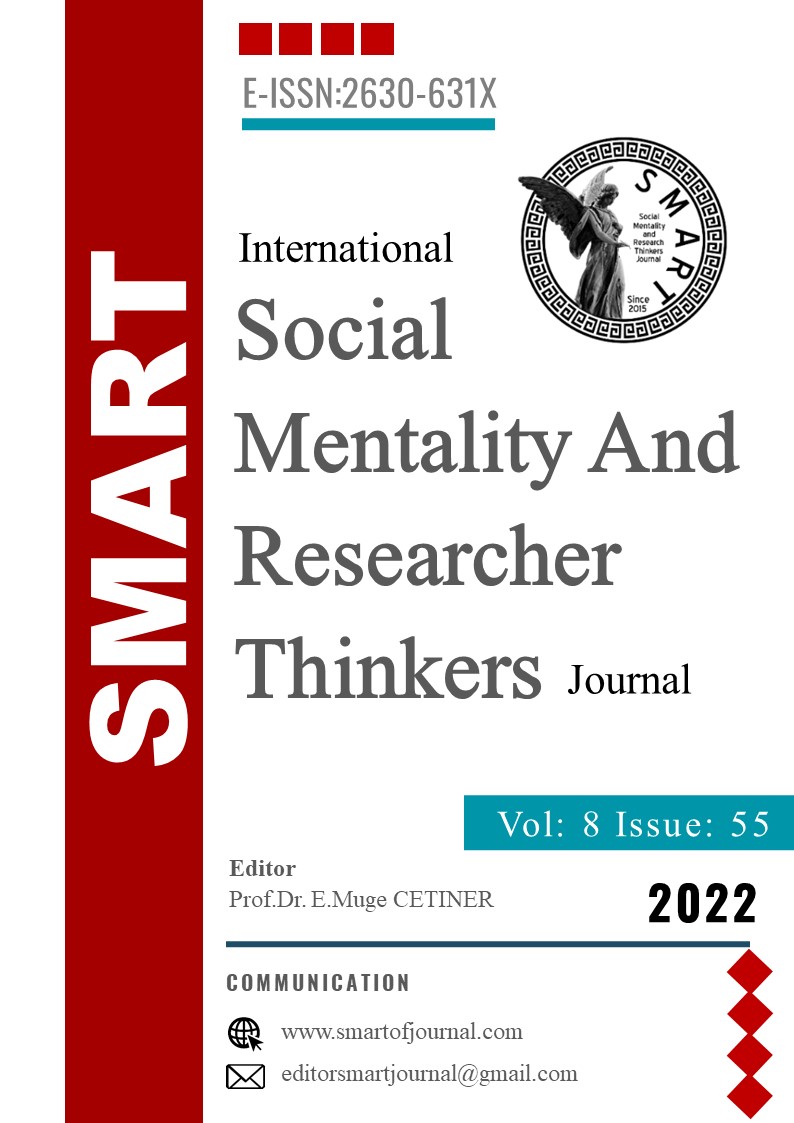Author :
Abstract
Duyulama, duyusal gücün bir organda duyusal form olarak algılanmasıdır ki bu form bir bilme edimidir. Bitkilerde bilme edimi harekete duyarlı reseptörlerdir. Bitkiler sesleri duymazlar ama evrende tüm sesleri duyulama becerisine sahip organsız bedenlerdir. Onlar türümüze ait duyma, görme, tatma, koklama ve dokunma gibi duyu organlarına sahip değildir. Bu makale, habitat florası olan bitki çeşitliliğini duyulama terimi ile izaha girişmekte ve organsız bedenler olan bu mükemmel varlıkları bu özellikleriyle tasvir etmektedir. Bitkiler müzikten ilham alabilirler ama herhangi bir müzik türünün bitkilere ilham verdiğini kanıtlamak bilimsellikten uzaktır. Çünkü evrende yaşam süreklilik hâlindedir; bir yandan duyularımız ve aklımız bizi yanıltır, diğer yandan sürekli bilgi vermeye devam eder. Bunu anlamak için pek çok şeyin yetersiz olduğunu düşünmek hata değil erdemdir.
Keywords
Abstract
Sensibility is the perception of sensory power as a sensory form in an organ. This form is an act of knowing. In plants, the act of knowing occurs with motion-sensitive receptors. Plants do not hear sounds, but they are organless bodies that have the sensibility to hear all universal sounds. Hearing, which exists in our species, does not have such sensory organs as sight, taste, smell and touch. This article, attempts to explain the term hearing instead of the term hearing in the diversity of plants that make up the habitat flora and depicts these perfect beings, which are organless bodies, with their hearing characteristics. A plant can be inspired by music, but it is not scientifically possible to prove which type of music inspires them. Because life in the universe is in a state of continuity. On the one hand, our senses and mind mislead us, and on the other hand, they constantly continue to give out information. It is not a mistake to think that many things are insufficient to understand this, but it is a virtuous quest.
Keywords
- Canetti, Elias, Saatin Gizli Yüreği, çev. Ahmet Cemal, Sel Yayınları, İstanbul, 2015.
- Canetti, Elias, Saatin Gizli Yüreği, çev. Ahmet Cemal, Sel Yayınları, İstanbul, 2015.
- Chamovitz, Daniel, Bitkilerin Bildikleri-Dünyaya Bitkilerin Gözünden Bakmak, 4. Baskı, çev. Gürol Koca, Metis Yayınları, İstanbul, 2019.
- Huizinga, Johan, Homo Ludens-Oyunun Toplumsal İşlevi Üzerine Bir eneme, çev. Mehmet Ali Kılıçbay, Ayrıntı Yayınları, İstanbul, 1995.
- Karasu, Bilge, Göçmüş Kediler Bahçesi, 14. Baskı, Metis Yayınları, İstanbul, 2020. Kutluer, İlhan, “İlm-i Nebât”, TDV İslâm Ansiklopedisi, 22: 134-137, 2000.
- Mancuso, Stefano, Bitki Zekâsı-Bitki Zekâsının Şaşırtıcı Tarihi ve Bilimi, çev. Almila Çiftçi, Yeni İnsan Yayınları, 2017.
- Ovidius, Dönüşümler, çev. İsmet Zeki Eyüboğlu, Payel Yayınları, İstanbul, 1994.Serling, Rod, “A passage for trumpet”, The Twilight Zone, Episode 32, 1962.
- Singer, Peter, Hayvan Özgürleşmesi, çev. Hayrullah Doğan, 2. Baskı, Ayrıntı Yayınları, İstanbul, 2018.
- Soyşekerci, Serhat, “Yeni cehâlet çağı: hayvan deneylerine dair bir derkenar”, Journal of Social Humanities and Administrative Sciences, 7(43): 1430-1439, 2021.
- Suavi Karaibrahimgil, “Müzikomani”, Gurbetçi Albümü, 1982.
- Tompkins, Peter; Bird, Christopher, Bitkilerin Gizli Yaşamı, çev. Sulhi Dölek, Sungur Yayınları, İstanbul,Wohlleben, Peter, Ağaçların Gizli Yaşamı, 5. Baskı, çev. Ali Sinan Çulhaoğlu, Kitap Kurdu Yayınları, İstanbul, 2018.





